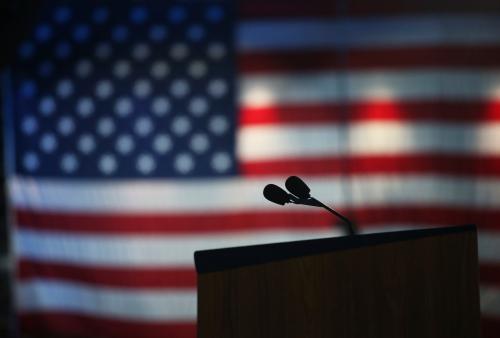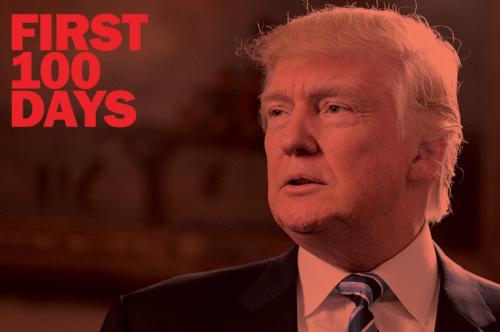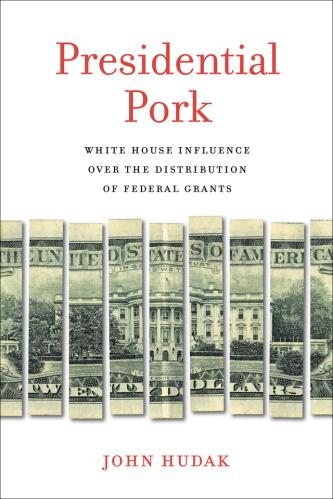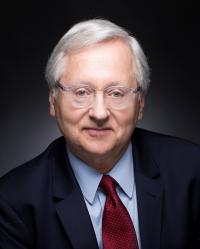Is there a point to all of the energy devoted to assessing Donald Trump’s presidency at 100 days? In the depths of the Great Depression, FDR’s stunning achievements set a standard that has never been and likely never will be matched. Since then, in purely practical terms, it has not been a particularly useful time frame for gauging how a new administration, much less the country, will fare in the months and years ahead. Surely the economic, foreign policy and political conditions facing a new president importantly shape the need for and success in a quick start. Events inevitably shape the presidential calendar and significant policy making typically has a long gestation.
President Trump has dismissed this standard as “ridiculous” but made much of his promise during the campaign and transition to start making America great again on day one. He is reportedly deeply agitated by the prospect of a low grade from the press on his hundred-day report card and in recent weeks has frantically tried to set the stage for some signs of progress in working with Congress while generating enough executive orders and controversy to persuade his political base that he is fighting the good fight against the Establishment. What lies ahead in the next week or two are historical rankings, dueling lists of achievements and tales of failures, and attacks by Trump on the “fake news” of mainstream media, the “enemy of the American people.”
Alongside this inevitable spectacle—the governing equivalent of “horserace” coverage of the campaign—it might be instructive to ask some questions different than we usually do at this juncture. How durable does our democracy appear? What are the most telling signs of resilience and erosion? What impact has Trump had on the presidency itself? Do most Americans have reason to be embarrassed by his own special form of presidential performance art, fearful of his impulsiveness in dealing with adversaries and allies, dismayed by early signs of cronyism and his use of the office for personal enrichment, and perplexed by his lack of knowledge, interest in, and moral sense of government and public policy? Is it more reasonable to appraise his presidency by the extent of the damage done than by his relative batting average in deploying the resources of his office?
As these questions suggest, I neither assume Donald Trump is a normal president of the United States nor believe he should be analyzed like those who preceded him. I read that he is adapting to an unfamiliar office and pragmatically dispensing with those campaign promises that now appear unrealistic in the face of the complexity of government and policy to which he is perforce awakening—much like an apprentice learning on the job.
Perhaps more accurate is the continuity between his campaigning and governing. Mendacity, chaos, disruption, deflection—then and now. Here are few observations of Trump in office that support the proposition that what we saw in the campaign is what we are getting in office.
Trump has continued his assault on the pillars of our democratic system but has encountered more resistance than he did during the campaign. Those “fake news” organizations are still under attack but now, freed of the shackles of false equivalence during the campaign, are engaging in more serious reporting and writing with clear eyes and fearlessness that are the mark of a free press. At this early stage, Trump has been frustrated by our independent judiciary, with several of his key immigration-related executive orders stayed by federal judges. His efforts to intimidate the intelligence agencies have faced strong blowback, and investigations of the Russian interference in the 2016 election with the possible collusion of Trump campaign officials continue, no thanks to a Republican Congress that is slow-walking public hearings on these abuses. More generally, military and civilian agencies have been alert to the threats of dangerous and possibly illegal executive actions. Trump’s determination not to release his tax returns or remove the myriad conflicts of interests with his and his family’s business activities remains firm, but one small government agency, The Office of Government Ethics, and a broad coalition of nonprofit reform organizations have made a mockery of his promise to “drain the swamp.”
Most significant are the signs of public resistance to the illiberal actions and rhetoric of President Trump. At this point civil society is emboldened and mobilized, not intimidated or quiescent. Ultimately, if Trump and Trumpism are to be defeated, it will be through the electoral process, starting with special elections to fill vacancies, this fall’s state off-year elections, the critical 2018 midterm elections, and ultimately the 2020 presidential election years. At this point, signs are encouraging.
In the meantime, Trump’s reckless abandonment of the U.S. role in the liberal international order and his decidedly non-populist collaboration with congressional Republicans on health policy and tax reform presage difficult times ahead for U.S. national interests, global security, and the economic well-being of working and middle class Americans.









Commentary
Trump at 100 Days
April 26, 2017